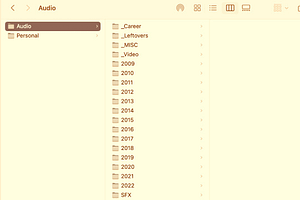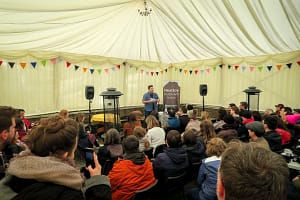
Quick guide to audio file management and naming conventions
I once asked a group of about eight audio makers about file management and the conversation almost ended in a
We talk a lot about momentum in storytelling but master documentary makers Cristal Duhaime and Mira Burt-Wintonick (Wiretap, Love Me) reckon it’s also worth thinking about pacing and how we work with negative space.
How can we use space to play with time, build tension and control the emotional flow of a piece?
They’ve given an online workshop exploring these ideas titled Rhythm is a Dancer: Timing and Structure in audio.
It’s part of the Podcast Maker Weekend series facilitated by Martin Zaltz Austwick. Sessions have been running throughout the pandemic lock down, follow the Facebook page to check out some others.
Notes/quotes
• The first scene sets the time signature and tone of piece. It primes the listener for what to expect.
• You can reset the listener’s expectations and encourage patience. Wrench the listener to get on board with your pacing.
• How long can we delay certain bits of information so that the listener is wondering where this is going? That’s where the interactive element of audio storytelling comes in, where you’re getting the listener to lean forward and wonder, what is not being said?
• It’s the same with emotion — you can withhold emotion too. You want to be careful about how you’re pacing emotions, like raindrops. You don’t want to soak the piece up front.
• Pacing can be like a rollercoaster. Going up, hearing the mechanical clicking sound, nothing exciting is happening necessarily, just the build up of tension.
• We’re not just trying to recount something; we’re trying to get inside an experience. We try and translate the experience.
• Adding space gives tension. By virtue of spacing it out, you can elevate tape, and give it a new quality.
• Silences are literally a blank slate so the listener can fill them in with whatever their imagination can come up with. More space allows for more imagination.
• Strike a balance between dragging in a boring way and drawing out in a pleasant way. Be aware of the reveal and how satisfying it is – this will determine how much time you have to play with.
• Montage is one of the hardest things to pull off. It takes a lot of time to mix and match pieces of tape, complementing different tape rhythmically.
• Always try to create variation throughout a piece – pairing quick with slow will help maintain engagement and momentum.
• In an art gallery the picture frame and space around the paintings has an impact on how you see the art. If the paintings are cluttered you might not be able to appreciate the work. Breathing space gives space for the power to sink in.
• Use pace to illustrate the passage of time and to help stick the landing. More space in the ending can help feel like an ending, even if the tape isn’t amazing. Not allowing for thinking time is like doing a massive workout and not cooling down.

I once asked a group of about eight audio makers about file management and the conversation almost ended in a

The alleyway is stereotypically dark and long. It’s after 1am, I have no idea where I am and my phone’s about to die.

Here’s what to expect from the ‘Who gives a fork?’ live show touring Aug/Sept 2022.

Jill Beytin, co-founder of Bear Radio, describes where the local scene is at including a juicy story about a recent controversy with one of Germany’s public broadcasters.
get the latest news about upcoming projects:
© 2021 mike williams